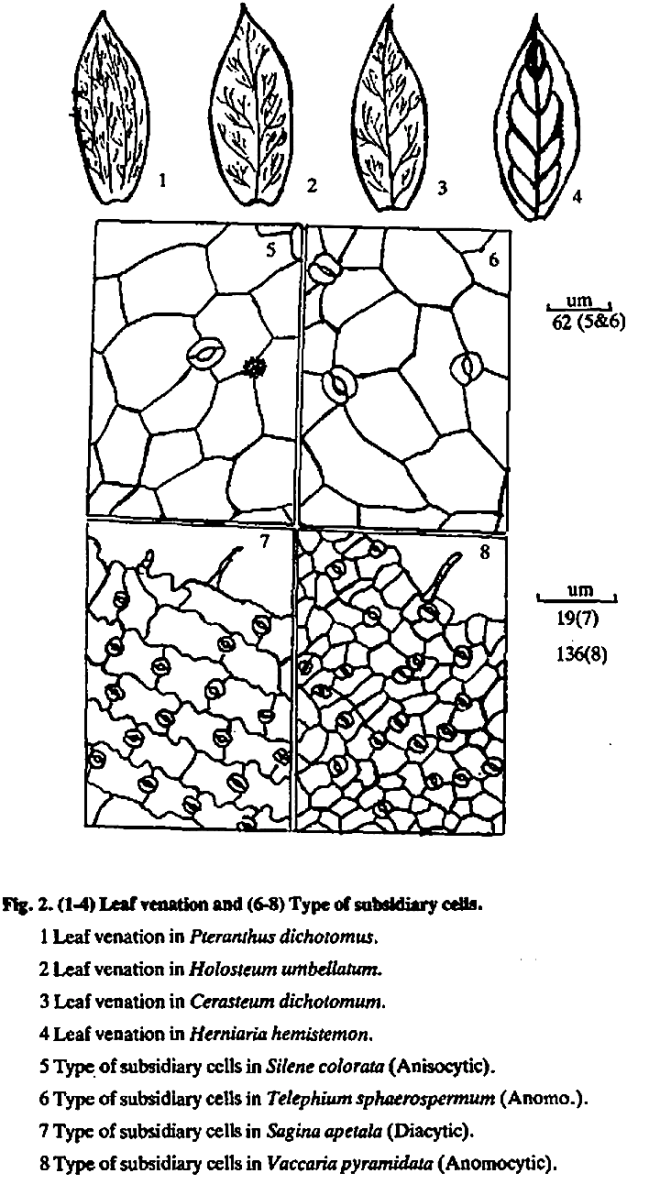
Morphological Studies within the Caryophyllaceae
by Taia W. K., Ismael S. R. (1994)
W. K. Taia, S. R. Ismael,
Faculty of Science, Botany Department, Alexandria University, El-Shatby, Alexandria, Egypt.
======
in J. King Saud Univ. 6 (2): 81-194 –
http://masder.kfnl.gov.sa/bitstream/123456789/13405/2/U01M01V06I02A09.pdf?locale=en
Abstract.
This paper reports upon a study of the macro- and micro-morphological characters of 72 Egyptian species from the family Caryophyllaceae, based mainly on herbarium specimens.
From this study, it was obvious that leaf characters such as trichomes, stomata and venation have significant value in the identification of some species.
Accordingly, we can conclude the following:
1) The genera Stellaria and Spergula. which have been treated as a single genus and later separated on the basis of the presence or absence of stipules. share the same morphological features.
2) The genera Arenaria and Minuartia, which have been separated by according to the number of teeth opening in the capsule, share the same morphological characters.
3) The genera Scleranthus, Paronychia and Herniaria, which have been treated as a separate family. Illecebraceae, have the same morphological characters as the Caryophyllaceae which does not support their separation.
===========
The micro-morphology of mature leaves has been considered of great importance in taxonomy. Solereder [11], Payne [12], Dilcher [13], Wilkinson [14], Vesque [15] and others have proposed different terminolog for descriping the cells surrounding the stomata.
The terminology we are dealing with here follows that proposed by Wilkinson [14], while the terminology used in descriping the trichomes follows that proposed by Payne [12].
Within the Caryophyllaceae three types of stomata are present: anisocytic, diacytic and anomocytic. The first two are found together in Silene biappendiculata, S. longipetala, S. behen and Vaccaria oxyodonta. Anisocytic stomata are found in Paronychia nivea, Polycarpon prostratum, Cometes surathensis, Bufonia multiceps, Silene pseudatocion and S. colorata. Diacytic stomata are found in Pteranthus dichotomus, Spergula fal/ax, S. arvensis, Spergularia bocconii, Arenaria serpyllifolia, A. deflexa, Sagina apetala, Minuartia geniculata, Silene rubella, S. gallica, S. villosa, S. arabica, Tunica compressa and Robbairea delileana v. major; while the anomocytic stomata is the common type in the rest of the family.